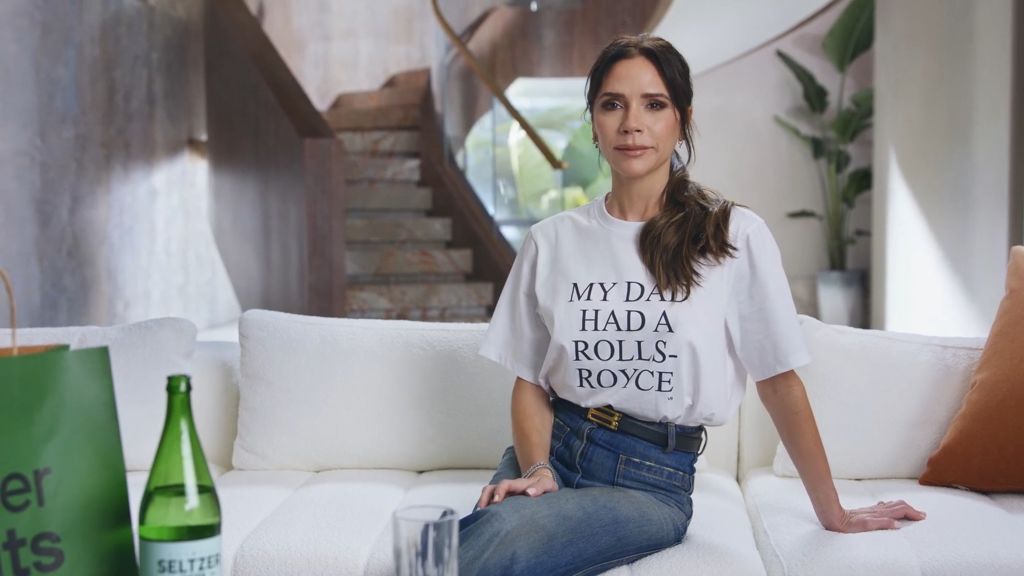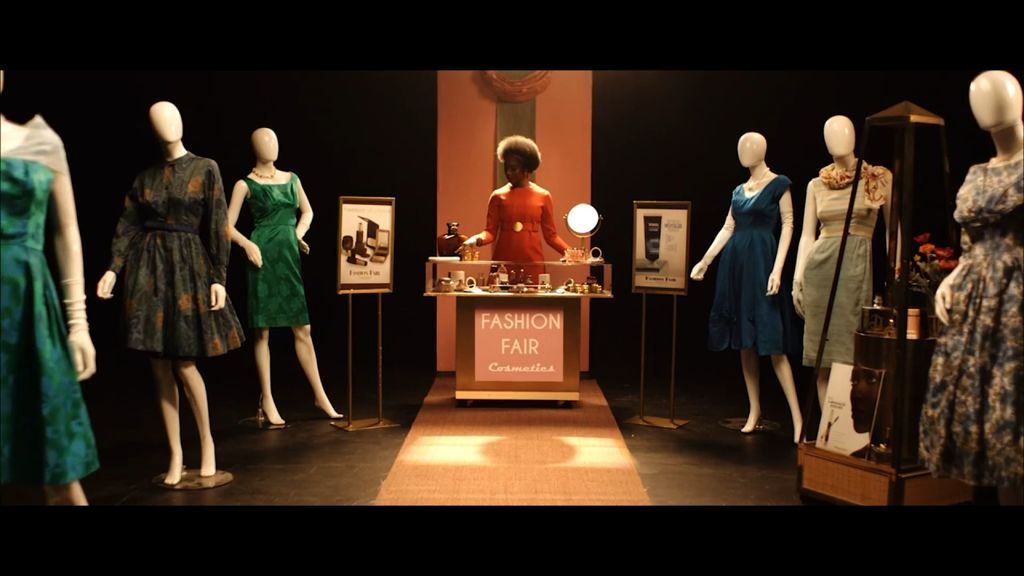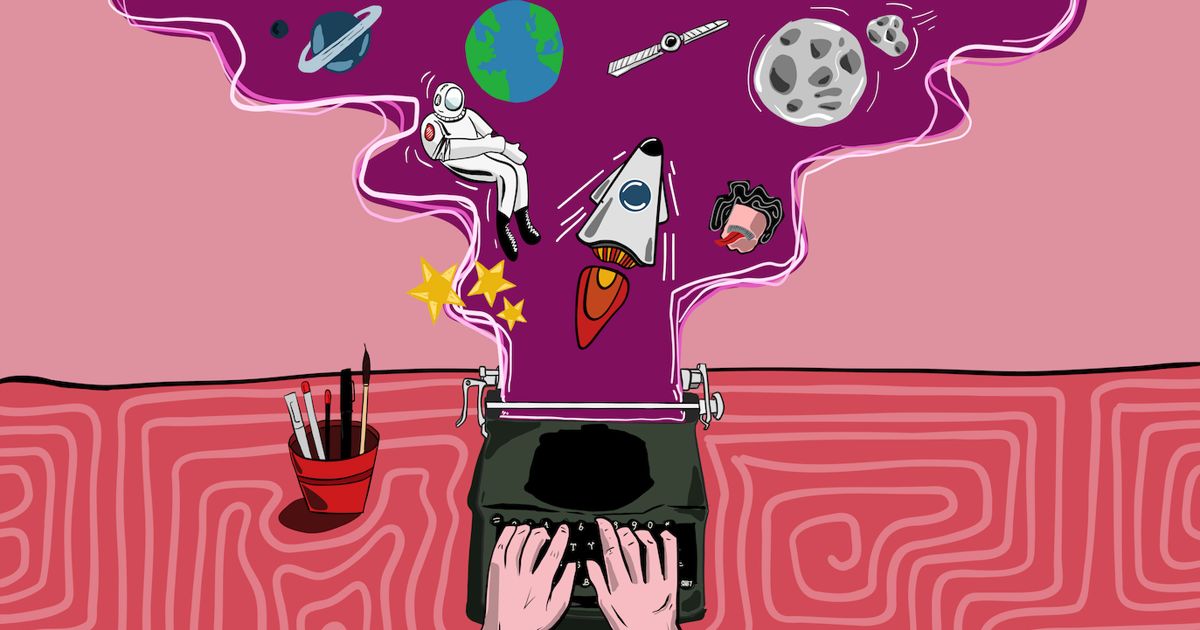Let's put storytelling at the heart of branded entertainment
If brands want to engage with a new generation of platform-native consumers then audiences need to be entertained and educated, says Natasha Wellesley, Head of Integrated Production at Ogilvy UK. Telling culturally relevant stories via short-form content might be a big shift for marketers, but it’s an exciting one.
Consumers are savvy people. With all the pressure on brands to show up authentically in recent years, audiences are more switched onto those that lack credibility and behavioural truth.
So, when it comes to branded entertainment in short-form content, it’s high time we focus on telling culturally relevant stories over shoehorning in products and services.
Success in building genuine connections with consumers now hinges on knowing what a brand’s place in the cultural zeitgeist is. It’s become more about telling stories rather than direct selling – and short-form content is a fast-growing way of doing this.
Success in building genuine connections with consumers now hinges on knowing what a brand’s place in the cultural zeitgeist is.
It has become a language of social and digital platforms that people speak to everyday. This might feel like a big shift for marketers, but it’s an exciting one. Brands are speaking to a new generation of platform-native consumers and there has never been more demand for great content. With that, there’s a fresh opportunity to foster deeper connections with audiences through high-impact storytelling.

Above: Netflix documentary series Drive to Survive saw the brand, Formula 1, as not just a sponsoring brand, but the heart of the show.
Entertainment, education, escapism
Any brand’s short-form content has got to tick one of the three boxes for consumers to seek it out: entertainment, education or escapism.
You don’t need me to tell you that no one is proactively looking for a product plug, but there are other - more creative - tactics brands can use to drive awareness and loyalty using short-form content. It’s just got to be audience-first. So, how do you go about getting this right? You create content that would never have come to life without the brand behind it.
With the brand already embedded into the story, [Drive to Survive] didn't need any product placement that would jar with the viewing experience.
Think Formula One’s Drive to Survive as a prime example. The documentary – a first-of-its-kind behind the scenes spotlight on the World Championship – literally wouldn’t exist without F1 at its core. With the brand already embedded into the story, it didn't need any product placement that would jar with the viewing experience. It was a totally authentic look at the brand that no one else could offer.
Credits
powered by
- Agency Special Group/Los Angeles
- Production Company Gifted Youth
- Director Alice Mathias
-
-
Unlock full credits and more with a Source + shots membership.
Credits
powered by
- Agency Special Group/Los Angeles
- Production Company Gifted Youth
- Director Alice Mathias
- Executive Producer Josh Morse
- Editing EXILE Edit
- Managing Post Director Carol Lynn (CL) Kumpata
- Executive Post Producer Jennifer Locke
- Executive Post Producer Michael Miller / (Head of Production)
- Editor Kirk Baxter
- Editor Matthew Murphy
- Editor Zaldy Lopez
- Editor Danielle Sclafani
- Editor Cole Grom
- Assistant Editor Jonathan Rogers
- VFX Pariah VFX & Post
- VFX Managing Director/Executive Producer Mark Tobin
- Executive VFX Producer Michael Steinmann
- Executive VFX Producer - Social Michael Steinmann
- VFX Producer Andrew Rosenberger
- VFX Producer - Social Mark Melchior
- Color Company 3/New York
- Color Company 3/Los Angeles
- Color Producer Shannen Troup
- Senior Colorist Tom Poole
- Senior Colorist Matt Osborne / (Colorist)
- Music JSM Music
- Music Chief Creative Officer/CEO Joel Simon
- Music Vice President/Executive Producer Jeff Fiorello
- Senior Music Producer Norm Felker
- Senior Music Producer Andrew Manning
- Music Producer Sharon Cha
- Sound Eleven Sound
- Senior Audio Producer Andrew Smith / (Audio Producer)
- Sound Designer/Audio Mixer Jordan Meltzer
- Executive Creative Director Danielle Hawley
- Talent David Beckham
- Talent Victoria Beckham
- Chief Creative Officer Julian Schreiber
- Chief Creative Officer Tom Martin
- Head of Production Cat Craven-Griffiths
- Executive Creative Director Matthew Woodhams-Roberts
- Executive Creative Director Dave Horton
- Producer Bernard Rahill
- DP Larkin Seiple
- Chief Production Officer Vic Palumbo
- Creative Director Alice Blastorah
- Creative Director Josh Hacohen
- Creative Director Jonathan Marshall
- Creative Director Eron Broughton
- Executive Post Producer Brian Schimpf
- Social Executive Creative Director Karan Dang
- Associate Creative Director Daniel Greener
- Senior Post Producer Adam Parker / (Producer)
- Associate Creative Director Natalie Seitz
- Executive Producer Jen Dennis
- Senior Producer Nat Bricker
- Assistant Editor Melanie Newton
- Assistant Editor Chris Messier
- VFX Supervisor Matthew Sousa

Credits
powered by
- Agency Special Group/Los Angeles
- Production Company Gifted Youth
- Director Alice Mathias
- Executive Producer Josh Morse
- Editing EXILE Edit
- Managing Post Director Carol Lynn (CL) Kumpata
- Executive Post Producer Jennifer Locke
- Executive Post Producer Michael Miller / (Head of Production)
- Editor Kirk Baxter
- Editor Matthew Murphy
- Editor Zaldy Lopez
- Editor Danielle Sclafani
- Editor Cole Grom
- Assistant Editor Jonathan Rogers
- VFX Pariah VFX & Post
- VFX Managing Director/Executive Producer Mark Tobin
- Executive VFX Producer Michael Steinmann
- Executive VFX Producer - Social Michael Steinmann
- VFX Producer Andrew Rosenberger
- VFX Producer - Social Mark Melchior
- Color Company 3/New York
- Color Company 3/Los Angeles
- Color Producer Shannen Troup
- Senior Colorist Tom Poole
- Senior Colorist Matt Osborne / (Colorist)
- Music JSM Music
- Music Chief Creative Officer/CEO Joel Simon
- Music Vice President/Executive Producer Jeff Fiorello
- Senior Music Producer Norm Felker
- Senior Music Producer Andrew Manning
- Music Producer Sharon Cha
- Sound Eleven Sound
- Senior Audio Producer Andrew Smith / (Audio Producer)
- Sound Designer/Audio Mixer Jordan Meltzer
- Executive Creative Director Danielle Hawley
- Talent David Beckham
- Talent Victoria Beckham
- Chief Creative Officer Julian Schreiber
- Chief Creative Officer Tom Martin
- Head of Production Cat Craven-Griffiths
- Executive Creative Director Matthew Woodhams-Roberts
- Executive Creative Director Dave Horton
- Producer Bernard Rahill
- DP Larkin Seiple
- Chief Production Officer Vic Palumbo
- Creative Director Alice Blastorah
- Creative Director Josh Hacohen
- Creative Director Jonathan Marshall
- Creative Director Eron Broughton
- Executive Post Producer Brian Schimpf
- Social Executive Creative Director Karan Dang
- Associate Creative Director Daniel Greener
- Senior Post Producer Adam Parker / (Producer)
- Associate Creative Director Natalie Seitz
- Executive Producer Jen Dennis
- Senior Producer Nat Bricker
- Assistant Editor Melanie Newton
- Assistant Editor Chris Messier
- VFX Supervisor Matthew Sousa
Above: Beckham, the Netflix documentary about the superstar former footballer, put his brand front and centre and saw an eventual collaboration with Uber Eats.
It’s not about you
The series was a solid lesson for marketers on integrating a brand into educational – and binge-worthy - short-form content. It offered something that dyed-in-the-wool fans could obsess over, while also driving mass awareness with new audiences. In a similar fashion, Beckham got people talking about Posh and Becks everywhere from pubs to WhatsApp groups; spring-boarding memes to a whole new generation and a brand partnership with Uber Eats.
Consumers say that a brand has the capacity to make what they’re watching even better, but it doesn’t always have to be about the brand.
Research shows that when customers feel connected to a brand, more than half of them (57%) will increase spend. Sephora’s The Beauty of Blackness, which honed in on colourism within the cosmetics industry, didn’t put the beauty giant front-and-centre of the narrative. It was driven by the commitments Sephora has made (giving 15% of annual spend to black owned businesses), which in turn amplified its values and connected the brand with consumers who shared its ethos.
The film was so true to Sephora’s values that it would make consumers proud to buy from the brand, crucial in an age where consumers are so fast to call out lip service.
Credits
powered by
- Agency Digitas/New York
-
- Director Tiffany Johnson
-
-
Unlock full credits and more with a Source + shots membership.
Credits
powered by
- Agency Digitas/New York
- Director Tiffany Johnson
- Ad Agency Vox Media
- Ad Agency Ventureland
- Director Kiana Moore
- DP Ruben Contreras
- Editor Patrick NG

Credits
powered by
- Agency Digitas/New York
- Director Tiffany Johnson
- Ad Agency Vox Media
- Ad Agency Ventureland
- Director Kiana Moore
- DP Ruben Contreras
- Editor Patrick NG
Above: Sephora’s The Beauty of Blackness short was made with a light touch from the brand.
Don’t forget about the platforms
There’s a deluge of consumer touchpoints available on so many levels that brands should be tapping into. With that in mind, marketers should be cautious of siloing any short-form content. They are well-positioned to amplify short-form content on relevant platforms and formats – spanning everything from talking about the work on a podcast to print placements.
Brands will drive more impact by thinking multi-channel and reaching target consumers at a time and place that works for them, helping drive the right audiences back to the content.
Consumers will only engage with it when it’s worth their time.
But, wherever content lives, and however it’s promoted, the appetite for short-form is ripe at the moment. YouTube – a popular home for this type of work – was the most watched streaming platform for the 12th consecutive month in January, and there are so many other measurable formats that can be used as a powerful medium to harness these stories.
The value exchange
There’s certainly a place for brands in short-form content, but consumers will only engage with it when it’s worth their time. There’s got to be a value exchange. Success banks on making the brand integral to an engaging story that consumers can’t get anywhere else, and then needs to be amplified on platforms their target audience loves.
)




 + membership
+ membership







